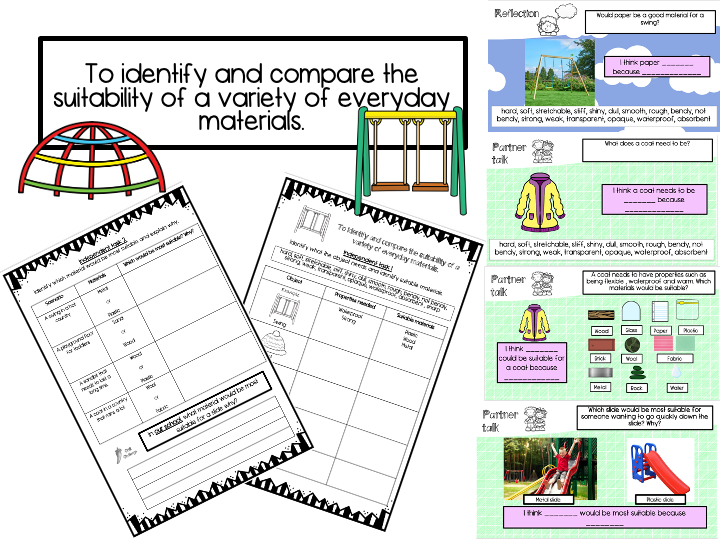


Thank you for looking at my resource.
This is the second lesson in a sequence. The lesson can be taught independently without the need for the previous lesson or the next lessons. This lesson can be picked up and taught straight from however is fully editable.
This resource includes a fully comprehensive PowerPoint ,worksheets/resources catering to a wide range of abilities, preparation list and a lesson plan.
Children will be designing a new play park. They will complete a number of tasks to ensure they have remembered their prior learning from year 1 and their previous lesson on material uses. This will also ensure that this prior learning is at the forefront of their thinking ready to apply for their new learning.
Children will discuss with a partner whether paper would be a ‘good’ material for a swing. This will lead into the introduction of the concept of suitability.
The first task children will complete will involve identifying all materials that would be suitable for an object. Children will build up to completing an independent task.
Children will return as a class to look at how the object’s exact use can change which material is most suitable. Children will look at different scenarios and discuss which material would be most suitable.
Helping hands will be provided for children who need additional support as well as a chilli challenge for both independent tasks.
The chilli challenge should be provided to all learners the ’ differentiation ’ will be based on how children complete the task.
Children will have stem sentences to support oracy and enable children to focus on the science rather than forming a sentence.
Something went wrong, please try again later.
This resource hasn't been reviewed yet
To ensure quality for our reviews, only customers who have purchased this resource can review it
to let us know if it violates our terms and conditions.
Our customer service team will review your report and will be in touch.